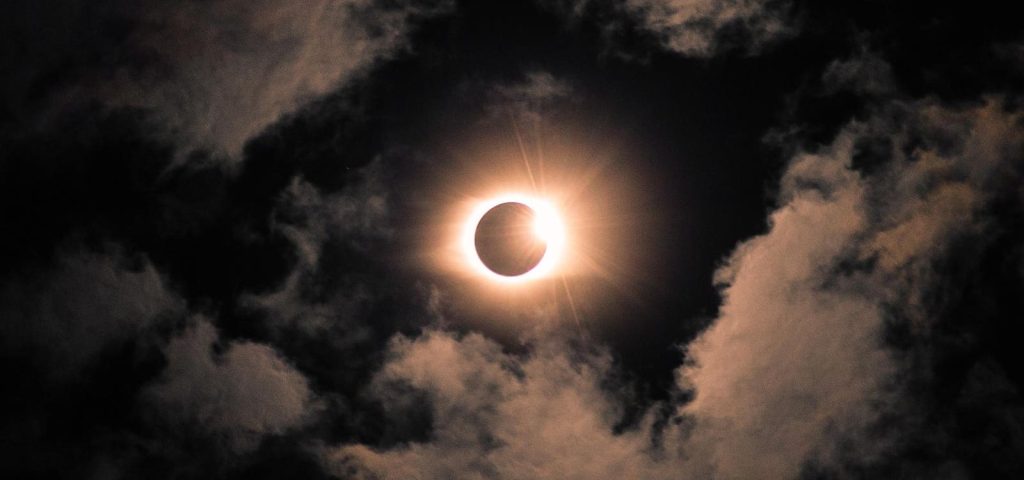If you want to upset a cocky eclipse chaser who planned a trip to see April 8’s total solar eclipse years ago, utter this word: clouds. The point of traveling into the path of totality—that 115-mile-wide track across Mexico, the U.S. and Canada—is to see the sun’s spectacular white corona for a few minutes while it turns to night all around.
Clouds don’t ruin everything during a total solar eclipse—it still gets dark (arguably darker)—but they are to be avoided if at all possible. The trouble is, that’s not easy in early spring in North America. The chance of cloud cover—not to mention snow and storms—is higher than anyone wants to talk about. That applies everywhere along the path of totality.”
“Nobody has a guarantee on this one—even along the path with the best climate, you’ve still got a one-third chance of having some kind of cloud cover,” said meteorologist Jay Anderson, who presents a climatological analysis of eclipse tracks on Eclipsophile. Anderson’s website is consulted by eclipse chasers and tour companies offering trips to see central eclipses many years in advance. But its lessons can only go so far.
Climatology Vs. Weather
Where to see the 2024 total solar eclipse based on cloud cover forecasts is the number one question from all eclipse chasers—and has been for months and years. But it’s only half the story.
The old saying “climate is what you expect, the weather is what you get” describes the scenario whereby the eclipse chaser carefully studies historical cloud data—typically satellite maps—from years gone by in an effort to determine where it’s most likely to be clear.
For April 8, that data suggests that the south and central U.S. are more likely to have a clear sky for the total solar eclipse. In short, that’s Texas and Arkansas, but there’s not much in it. For example, while Fredricksburg in the Texas Hill Country has a 49% chance of cloud cover on April 8, according to timeanddate, Dallas is 59%, Little Rock 57%, Indianapolis and Cleveland 60% and Buffalo 64%. It’s not radically different away from the extremes—Mazatlan on Mexico’s Pacific Coast has a 28% chance of cloud, and in Newfoundland, Canada, it’s 78%.
Three-Day Forecasts
What will happen on the day is anyone’s guess—and will be until around April 5 when the three-day forecasts come in. “Three days ahead of time, you can get a pretty good idea where the decent weather will be,” said Anderson. “There’s good luck involved.”
Look at cloud cover on satellite maps for the last 40 years—as Anderson has—and it reveals an annoying level of variation from year to year. For example, here’s an image from April 8 last year (above), that confounds all expectations—with clouds over Texas and a clear sky for almost all the rest of the path of totality.
Anderson has studied satellite maps for early April, going back decades. “There have been some days where the whole track as far north as New York State has been clear and others where everywhere down to the most southerly parts of Texas is clouded over,” he said. However, the usefulness of these satellite images is limited. For starters, they weren’t taken at the specific times that the eclipse will pass across each location. That will take 100 minutes on April 8.
‘Eclipse Cooling’
Another spanner in the works is the fact that an eclipse wasn’t going on when any of the satellite images were taken. So it’s possible that “eclipse cooling” may take place, dissipating any convective cloud. After all, convective clouds are the result of the sun heating the land. Shut down that mechanism, and they’re starved.
Eclipse cooling, however, can give, but it can also take. If there’s a low cloud as the partial phases begin, the cooling can dissipate clouds. However, if there’s cloud in the morning that burns off by eclipse time, the cooling brought on by the eclipse can actually cause clouds to return during the eclipse. Mountains and valleys are best avoided.
Go With Climatology
For all of its limitations, climatology is all we have, for now. Decisions need to be made and, for many eclipse chasers, they need not to change. If you need to quickly book an expensive hotel and flight to a city in the path of totality right now, it’s not a decision that can be easily or affordably undone.
It’s also true that a massive influx of people in the path totality could make roads so congested that the idea of driving around looking for gaps in the clouds is completely unworkable. “People who really want to see the eclipse should be thinking about their personal circumstances,” said Anderson.
For example, those in Texas Hill County—ground zero for the eclipse—may struggle to be mobile. “People say that they’re going to look at the weather and drive to where it’s clear, but if you’re one of 400,000 people doing that, are you really going to be able to move?” he said. “You may be better off just working with the climatology and positioning yourself, assuming that you’re not really going to be able to move much.” That could be down to crowds of motorists, but it could also be because you simply cannot abandon friends, relatives and loved ones to go driving around.
One Hundred Mile Miracle
Those that do have wheels and clear roads, however, may have the best chance on April 8 of a clear view of the sun’s corona during totality. If the climatology of the eclipse track teaches us anything, there will be gaps. “It’s very seldom that everything everywhere was clouded out on historical satellite images,” said Anderson. “You may see that the chances of a clear sky for a specific location are slim, but you’ll also see that if you had a 100-mile range, you would have been able to see the eclipse on eight out of the last 10 years.”
Read the full article here





